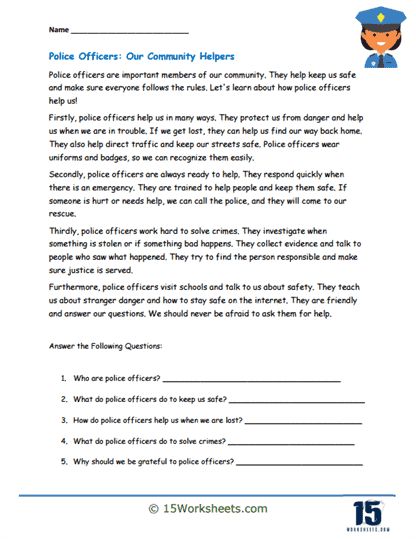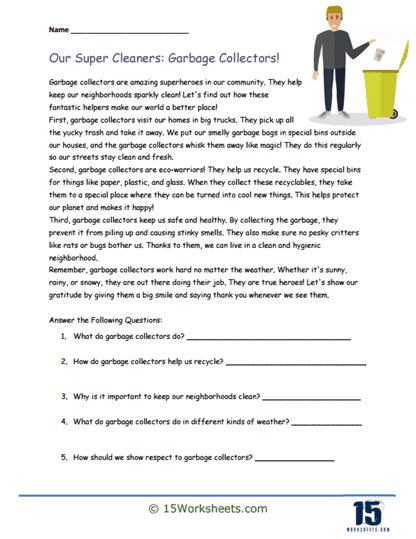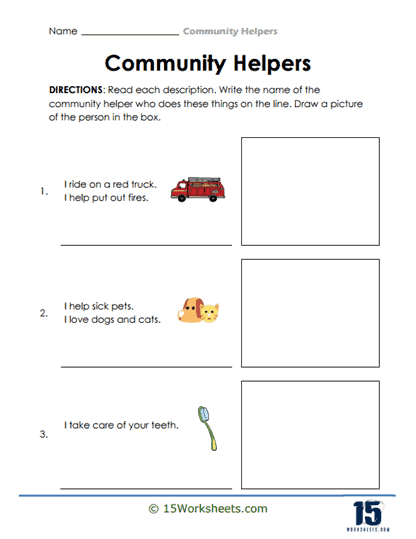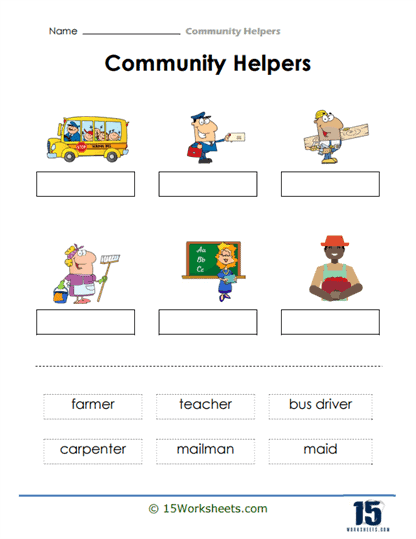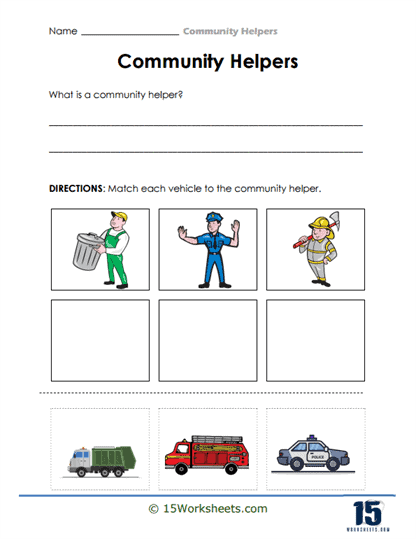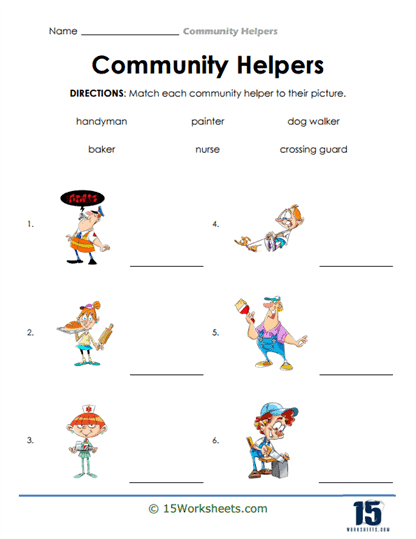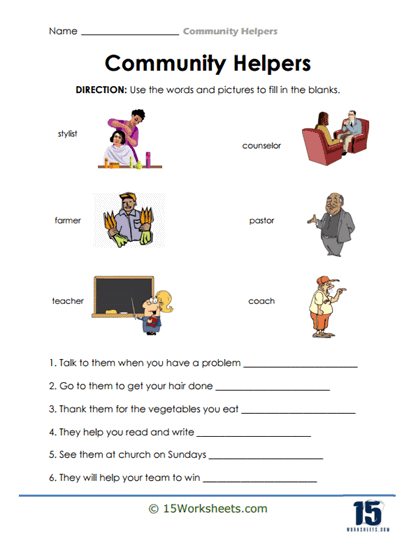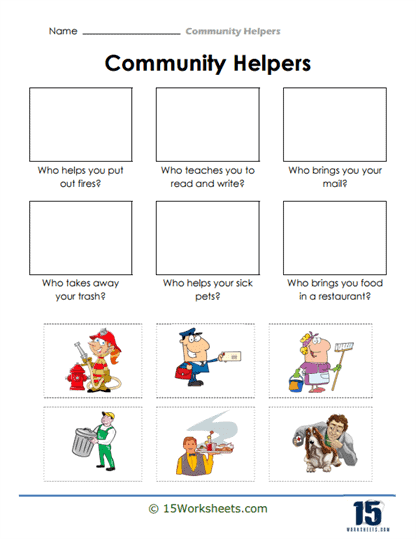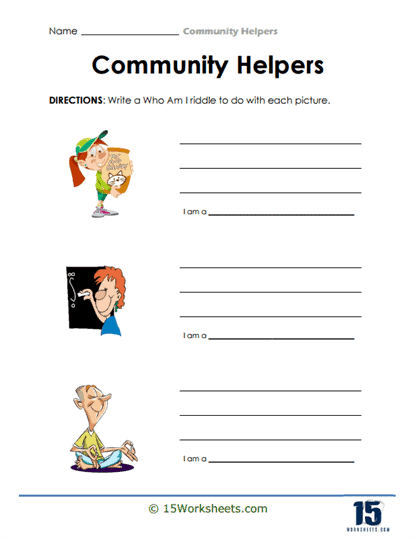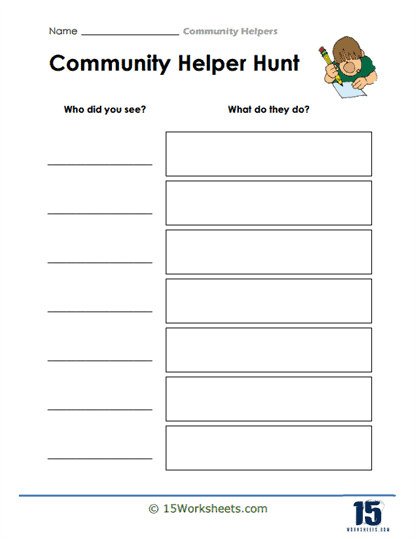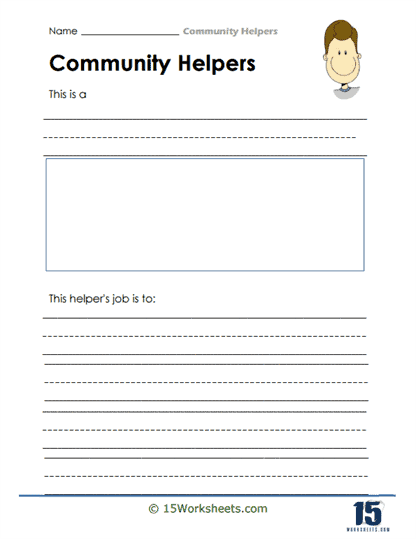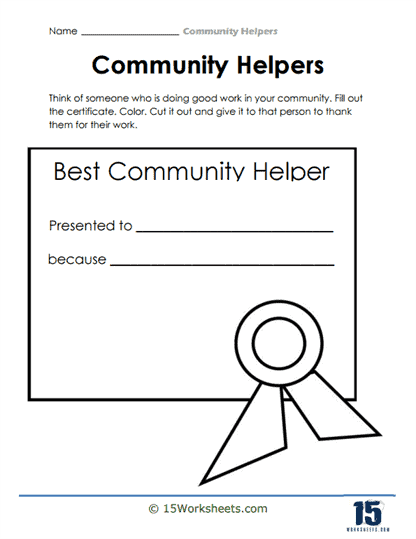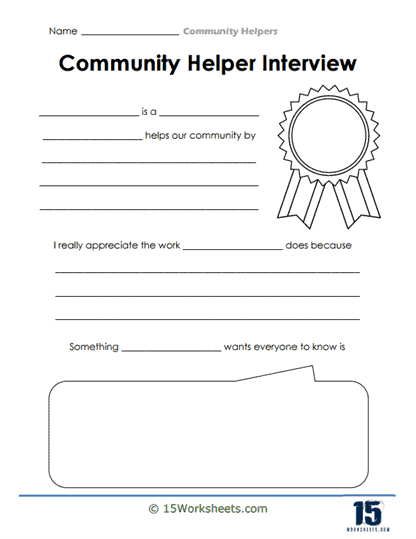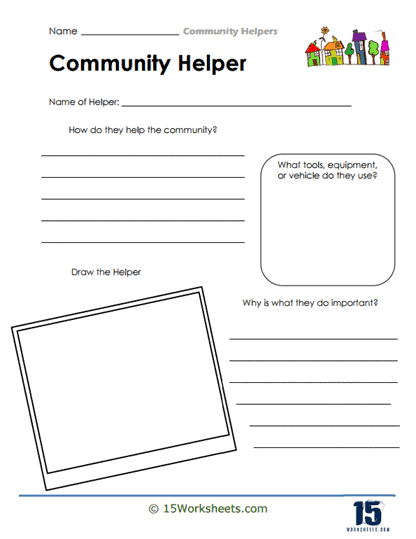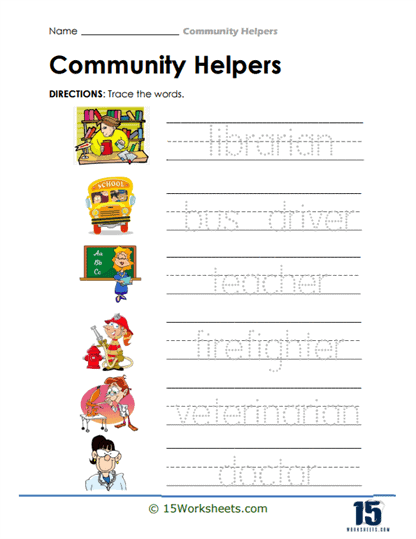Community Helpers Worksheets
About These 15 Worksheets
These worksheets are designed to teach students about the various roles and responsibilities of community helpers. These worksheets often feature activities related to different professionals like doctors, teachers, firefighters, police officers, mail carriers, farmers, and many more.
They include a wide range of activities including:
Identification – Students might be given pictures of various community helpers and asked to match them with their job titles.
Match Tools or Workplaces – These worksheets have pictures of tools or workplaces on one side (like a stethoscope or a hospital) and pictures of community helpers on the other. Students would then draw lines to connect each helper with their appropriate tool or workplace.
Reading Comprehension – Worksheets include short stories or descriptions about a community helper’s work, followed by comprehension questions.
Role-Playing – These worksheets include prompts for role-playing exercises where students act out the duties of various community helpers.
Coloring Pages – For younger students, coloring pages featuring community helpers can be a fun and educational activity.
A Detailed Look At the Collection
This worksheet collection is a noble, hilarious, and slightly chaotic introduction to the unsung champions of our neighborhoods: the people who keep society from collapsing every Monday morning. From Police Officers to Pastors, these worksheets help kids recognize that not all heroes drive Batmobiles-some just arrive in garbage trucks or give very stern talks in school gyms.
It begins gently, with sheets like Nurses and Garbage Collectors. Here, kids are asked to identify what these helpers do and how they contribute to society. It’s wholesome-until a student decides a nurse’s main job is to give out band-aids with cool cartoon characters. In Police Officers, they’ll explore the law and order side of the world-minus the theme music. They may draw a badge, or maybe just ask why cops get sunglasses and they don’t. Either way, these sheets build respect while sneaking in a little vocabulary and logic.
Things get wild with Cut and Paste Jobs and Pictures to Jobs, where fine motor skills meet occupational chaos. One minute, your kid is matching a chef to a pie; the next, they’ve taped a firefighter to a cow. (Sorry, Farmer Dan.) Worksheets like Stylist, Counselor, Farmer, Pastor, Teacher, or Coach ask students to identify roles that don’t come with obvious uniforms-prepare for a philosophical debate over whether a soccer coach is a helper or just someone who yells a lot on Saturdays.
Then come the true identity crises: Who Does This?, Who Am I Riddle, and What Are They? These are brain teasers dressed up in career day outfits. “I help people feel better, but I’m not a magician. Who am I?”-the answer is a nurse, but expect at least one child to write “grandma” and then argue it passionately. Helper Hunt and Basic Description ask students to recognize helpers in their community, which could be enlightening or result in someone listing “the guy who brings pizza” as their top community figure. Honestly? Fair.
The final stretch features introspective challenges like Describe a Helper, Community Helper Interview, and the emotionally stirring Best Ever! worksheet. Here, kids write about their favorite helper. Some choose teachers, some say their parents, and one rogue legend always picks Batman (despite zero presence on the worksheets). Word Trace sneaks in handwriting practice, because even superheroes need legible writing when they’re saving lives or explaining how to operate the town’s recycling truck. Altogether, this worksheet series turns career awareness into a deeply thoughtful and side-splitting adventure through the professions that truly keep our world turning-one band-aid, badge, or broom at a time.
Why Are Community Helpers Important To Us?
Community helpers are undeniably an integral part of our daily lives, providing essential services that we depend on, from healthcare and education to safety and commerce. Doctors, nurses, teachers, firemen, and police officers are just a few examples of these vital contributors, who ensure the smooth operation of our societies. Their roles extend beyond providing services; they also foster social cohesion and unity. By bringing people together and promoting mutual cooperation and assistance, they create harmonious communities.
Their economic contribution cannot be understated either. The work of community helpers, whether it be farmers producing food, builders erecting structures, or shopkeepers facilitating the sale of goods, forms the backbone of our economic activities. Alongside their economic influence, community helpers are instrumental in securing our safety. Police, firemen, and lifeguards help protect lives and properties, establishing a secure environment for all.
Community helpers often serve as role models, exemplifying values like service, responsibility, and hard work. They inspire, particularly children, showing them the importance of making positive contributions to their communities. Their influence on social development and progress is noteworthy as well. Through their efforts in improving life quality, enhancing infrastructure, promoting education, and advancing healthcare, community helpers drive societal growth.
Community helpers meet specialized needs with their specific skills and knowledge. The services of electricians, plumbers, and mechanics, among others, fill a critical gap in our societies, as these are tasks requiring technical expertise that most people lack. Hence, community helpers are not just important—they are irreplaceable, serving the needs of community members and ensuring the efficient functioning of our society. Their role allows us to live with dignity and convenience, proving their significance in our lives.

